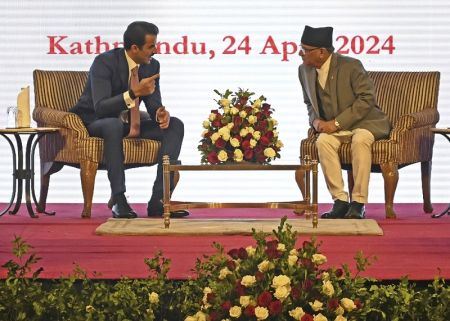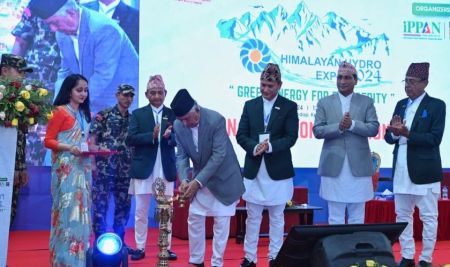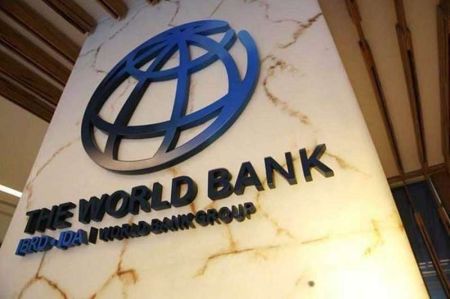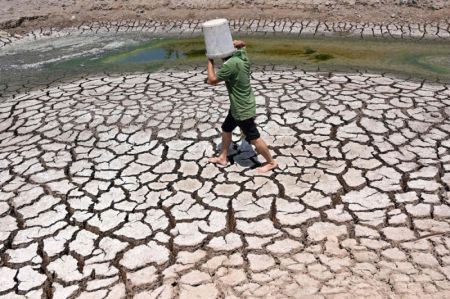
--By Prof Ujjwal K Chowdhury
Queerness of the Results
Interesting times indeed. Modi-fied BJP’s remarkable election campaign surely was fuelled by unprecedented sums of money, but more interestingly magnified by the rule of the first-past-the-post system. A mere 12 per cent difference in vote-share with the Congress has turned into 600 per cent difference in seats (NDA with 335 seats, including 282 of BJP against UPA with 60 seats, including 44 of Congress).
It has two repercussions: Modi’s darker past with regards to poor governance during 2002 riots in Gujarat has been almost banished, and Congress-led UPA’s abysmally poor record of scams-ridden governance has made the party justifiably suffer the worst defeat in its 129-year history.
The 'Modi Wave' has touched 40 per cent of voters, and left 60 per cent cold, with not much dent made in those states where regional parties still enjoy a high degree of credibility, like Tamil Nadu, Odisha and West Bengal, though it has wrecked the Congress everywhere. The wave swept through Uttar Pradesh, where it also managed to draw away voters from the BahujanSamaj Party, partially from the Samajwadi Party, and of course in Bihar too.
Taken together, MPs from national parties like Congress, the Left and the AamAadmi Party barely add up to 70, and regional parties like the AIADMK, the TRS and the BijuJanata Dal, or the Trinamool Congress, are unlikely to show much interest in, let alone challenge, the Modi government on a large number of crucial areas of policymaking. And this does not bode well for the largest functional democracy of the world.
How did Brand Modi Succeed?
Modi’s strategy was to turn the elections into a Presidential format by positioning the polls as a referendum on his performance in Gujarat and his India Vision. Rather than just harping on UPA failures, Modi chose, instead, to focus on a positive campaign around his perceived delivery in a mid-sized state, and the promise that he could make this national, telling one and all: ‘Vote for me and I will give you good governance’.He raised people’s high expectations from the party and him by promising ‘Minimum government, but maximum governance.’
Modi has won on the promise of ‘fixing’ the economy, combating corruption and inflation, and promising jobs and job security. He show-cased ‘Gujarat Development Model’ through a high-decibel, liberally-funded integrated media campaign, using the social media also to the hilt. Interestingly, by all accounts, Gujarat development story is poorer in content than that of Tamil Nadu or Kerala, but packaged like never ever before.
The anti-corruption plank of the Anna Movement and later AamAdmi Party electioneering was usurped by the same high-decibel Modi campaign effectively and the facts that Gujarat has no Lokayukta for the last one decade or that some ministers in Gujarat government are convicted criminals got lost in the din and bustle.
Indian youths, numbering more than half the electorate, with more than a hundred million first-time voters, are an impatient lot, and rightly so, with spiralling frustration at the dipping job prospects, lowering growth rates and increasing violence against women, on one side, and with surging expectations of quality life style of the developed nation, which they are exposed due to the easy access of information technology. This youth is bitterly opposed to corruption, and hence Congress or UPA as the fountainhead of corruption. Appreciating the AAP movement against corruption, the youth also wants to dream of a rosy future, and hence the dream-merchants of BJP campaign could create the immense eye-balls among the youth.
BJP successfully and steadfastly used information technology, 3D technology, and the like to create the lethal mix of slogans, machines and dreams, all fuelled by an immense investments from sources little known, creating the right surrounding sound ensuring victory even in areas where they hardly have organization on ground, as seen in Bengal or Assam, for example.
Political Leadership Challenges
The NDA’s emphatic victory in the national election establishes Modi as the BJP’s undisputed leader, who is next expected to overhaul leadership roles within the party by promoting leaders who hold sway over social and regional groups and dilute the upper-caste dominance in decision-making within the party.Modi's focus may be to promote a new set of leaders who would eventually become "faces" of the party in their respective areas. This will be a challenge indeed.
Modi’s immediate challenge will be to replicate the national success in the crucial assembly elections that follow in states such as Haryana, Maharashtra and Delhi, where the BJP has performed well. However, the actual performance of the Central government under Modi over the next four months will influence the situation in these states later this year.
The South Asian Message
Surely Modi-fied India will be a bolder India in the region, firmer on the borders, ruthless with foreign espionage on the Indian soil, intolerant with any form of terrorism or fake currency onslaught and even infiltration of the poor and hapless from across the borders.
Electoral rhetoric apart, the new government is expected to pursue the national interests zealously, though the focus will be more on domestic economy and internal security of India.
On the neighbourhood front, closer relations with Nepal and Sri Lanka, and a balanced business-like approach to China, Pakistan and Bangladesh are expected. There will be a setback of the radical Islamic forces in Pakistan, Bangladesh and Maldives consequently, and the new Indian government overtly or covertly will do all it can to that end. The centrist and rightist forces in Nepal and the pro peace reconciliatory forces of Sri Lanka may expect to get tacit support of the new Indian government.
Due to pressing domestic economic and strategic compulsions, the Modi government will need a working relation of low or no tension with China and Pakistan and focus more on economic cooperation. And, for Nepal, due to historic and geo-political reasons, the flow of capital, people and businesses may see a further surge, coupled with stricter border monitoring to curb cross-border movement of terrorist modules.
Economic Contradictions in the New Disposition
While the Indian corporate sector and native and foreign investors in the stock market are justified in celebrating the arrival of a "right wing", business-friendly Modigovernment in India, this is not necessarily the side of 'Modinomics' that most BJP voters would like to see. Modi campaigned hard on a platform of economic development, job creation and an efficient administration, and the 40 per cent of voters who backed the BJP-led alliance did so because they believe he will deliver on these promises. But contradictions exist in areas where satisfying the aspirations of a corporate constituency - for example in the area of labour reform - will end up undermining the aspirations of voters for jobs and job security. Another area to watch closely will be Modi government's approach towards law and order, and especially the right of vulnerable citizens - women, minorities, adivasis and dalits - to security, justice and equity.
The BJP-led government has filled investors’ hearts with the hope of a turnaround in India’s economic fortunes. The stock market is scaling record highs every day and the rupee has gained considerably against the US dollar. Foreign Direct Investment (FDI) of more than a trillion rupees has already been pledged in the first three days after results were announced. Perhaps the expectation is that Modi’s pro-business stance will help to lift India out of its current economic mire— GDP has grown by less than five per cent year-on-year for the past seven quarters, well below the near eight per cent average of the previous ten years.
But given the deep roots of India’s current predicament and the type of reforms that are required, along with dip in investment cycle in the last two years, one may suggest that investors’ optimism about an economic bounce may not be easy. India has, so far, narrowly avoided a downgrade of its sovereign credit rating to junk status. So, the fiscal position will continue to be precarious. Unless it is reversed, the government’s hands, with regards to increasing capital expenditure to boost infrastructure and therefore potential growth, will remain tied down.
The health of the private sector has also deteriorated considerably. Companies are highly leveraged, with the debt-to-equity ratio elevated at 83 per cent, highest among all emerging markets, and below only that of Greece and Italy. The levels of bad debt in the financial system are also rapidly on the rise. So, regardless of the party in power, both banks’ ability to lend money to businesses and companies’ propensity to invest are limited.
Further, many believe that a stronger government with more capable leadership will be able to restart stalled infrastructure projects, which have been held back so far due to regulatory hurdles. However, according to a recent report by Credit Suisse, only a quarter of the stalled investment projects are stuck with the central government, of which two-thirds are in power and steel - sectors that are already swamped with overcapacity. The other projects need clearance from state governments.
In order to achieve the government’s target growth rate exceedingeight per cent a year, as promised by BJP in its manifesto, India requires a major institutional overhaul aimed at reducing crony capitalism (which even the BJP government in Gujarat has been squarely accused of) and improving the business environment. According to the World Bank’s Ease of Doing Business Survey for 2014, out of 185 economies India ranked 134— well below its emerging market counterparts. And India scores just 36 on the World Bank’s Corruption Perceptions Index for 2013, where 100 is the least corrupt.
Economic Challenges before Modi Government
Modi government’s first credibility test with markets will be when it delivers a budget by July that will need to convince investors that India can realistically contain its fiscal deficit. The subsidies and austerity of the outgoing UPA government would prove hard to sustain, and harder to reverse. Continuing to defer payments to state-run companies that would compensate them for selling fuel, fertiliser and food below market prices can create havoc with their finances and make them rely on borrowing to fund operations; while, on the other hand, tax revenues are unlikely to recover immediately in a weak economy.
Further, higher duties and other restrictions almost halved gold imports, but the moves have been deeply unpopular. Gold smuggling surged after the UPA measures, casting doubt on reported data. The BJP promised to review gold import duties within three months of coming to power. That may please gold buyers, but not investors, as concerns about the current account deficit sent the rupee to a record low last August.
There are other challenges beyond government control: the El Nino weather pattern, typically associated with weak rains. Citigroup estimates that below-average rainfall in the June-September monsoon could reduce up to one percentof economic growth forecast and lead to a spike in inflation. Surging prices could spark tension with the central bank, which has made containing inflation a priority.
Replicating Gujarat at the national level will prove to be a yeomen task due to the variegated development stages across India, high differences in economic basics and social indices among provinces of India, among other things.
India is burdened with Rs.6000 billion bad loans in all nationalized banks put together, about 10 percent of all such bank loans. The bulk of these bad loans are related to infrastructure projects, which have made banks circumspect in lending. Also, crony capitalism will come in the way of recovering these loans.
Keeping the promise of 10 million jobs a year is the other big hurdle for the new government as the Indian economy has been witnessing almost a jobless growth for a decade now.
A Silent Prayer
A day after Modi wins India, my prayers: let India remain the synthetic cosmopolitan diverse nation that it is with the co-existence of so many different groups; let the tribal population not continuously suffer in the name of 'development'; let minimum standards of life of all precede maximum profits of some; let not, in the name of equal opportunities, snatch the minimum benefits the system at times gives to those who are born highly unequal; let justice and equity precede the blind search of growth and GDP; let not entrepreneurship gasp for breath under the tutelage of big business; let a thousand flowers bloom in expressions of all kinds - some unkind to those who rule too; let not mobs dictate terms to free souls; let hope replace cynicism and joy amid struggles to take precedence over apathy in abundance. Let my nation remain committed to the lofty ideals of humanity!
(Prof Chowdhury is education & media consultant. While the analysis and conclusions are his own, he has drawn on facts, figures and arguments available on Indian media specially The Outlook, The Hindu and The Hindustan Times.)





















